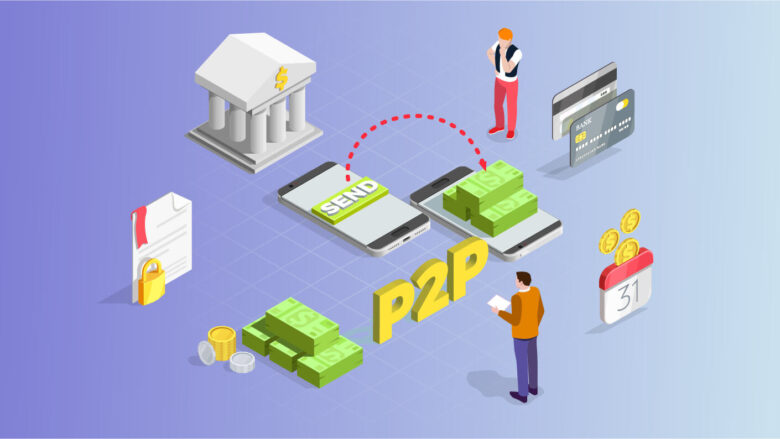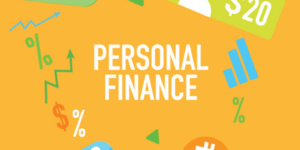Thanks to the proliferation of peer-to-peer (P2P) payment applications in today’s digital age, the process of transferring money between individuals has become incredibly easy. The proliferation of these types of apps has fundamentally changed the way people transfer payments, split bills, reimburse acquaintances, and even conduct business transactions. This article examines the development of P2P payment applications, their capabilities and their impact on the global financial environment.
1. The Rise of Peer-to-Peer Financial Trading Applications:
Apps that allow users to send and receive payments directly from each other are solutions that emerged to meet the need for simple and fast currency transactions. When PayPal was first released in the late 1990s, it was a revolutionary program that paved the way for the development of similar platforms. However, the widespread penetration of smartphones and Internet access on mobile devices are major factors leading to the explosive growth of P2P payment applications. Venmo, Cash App, Zelle, and Google Pay are just a few of the many programs that are revolutionizing the way people send and receive monetary transactions today.
2. Explanation of How Peer-to-Peer Payment Applications Work:
P2P payment apps act as an intermediary, allowing users to conduct secure financial transactions with each other. Before users can initiate a transfer, they must first link their credit card, debit card, or bank account to the app. Once connected, they can send money to others by simply entering the recipient’s email address or phone number. The app then notifies the recipient, who can then collect the money by linking their card or bank account.
These apps often use bank-level encryption and two-factor authentication to protect the confidentiality of financial information and prevent unauthorized access. Additionally, users can choose to use biometrics such as fingerprint scanning or facial recognition to verify their identity, adding an extra layer of security.
3. Ease of Use and Adaptability When Carrying Out Transactions:
P2P payment apps provide unparalleled convenience in various financial transactions. Splitting the bill at a restaurant, taking turns paying the rent, paying back a friend or even donating to charity has never been easier. These apps also make business transactions easier, allowing freelancers and small businesses to get paid quickly without the need for expensive point-of-sale equipment.
Moreover, the use of these apps is not limited to domestic financial transactions. Many P2P payment networks support international money transfers, allowing users to send money across borders at very little cost. Therefore, these platforms are suitable for both private and business transactions.
4. Impact on Cashless Economies:
The proliferation of peer-to-peer (P2P) payment apps has contributed significantly to the shift away from a cash economy. It is expected that the use of current currencies will decrease due to the increased efficiency of digital transactions. This change has many benefits, including reducing the amount stolen, reducing the costs associated with handling cash, and increasing transparency in financial transactions.
Furthermore, the transaction history available in these apps allows users to accurately track their spending, promoting financial literacy and smart spending habits.
5. Obstacles to be Overcome and Possible Innovations in the Future:
While peer-to-peer payment applications offer many benefits, there are still obstacles to overcome, such as data security, transaction fees, and a lack of interoperability between individual programs. Nevertheless, industry players are working hard to find solutions to these problems by continuously developing new technological solutions.
The future of P2P payment apps is full of exciting things. Integration with evolving technologies such as blockchain and the eventual adoption of central bank digital currency (CBDC) could further disrupt this landscape by increasing transaction speed, security and accessibility. Examples of such technologies are Bitcoin and Ethereum.
Conclusion:
All in all, peer-to-peer payment apps have revolutionized the way we conduct monetary transactions. Due to their user-friendliness, adaptability and ease of use, mobile applications have quickly become the basis of our daily activities. As technology continues to evolve, peer-to-peer (P2P) payment applications will likely remain at the forefront of financial innovation. These apps are changing the way we send and receive money locally and globally. Embracing these innovations will not only make our monetary transactions easier, but it will also help fuel continued growth in this direction as the world moves towards a more connected and paperless world.
FAQs:
1. Can you explain what a peer-to-peer payment app is?
Peer-to-peer payment apps are digital platforms that allow users to send and receive money directly from bank accounts or credit/debit cards using their mobile phones. This can be done by using peer-to-peer payment applications. It makes financial transactions easier to complete by enabling quick and easy money transfers between people.
2. Do you know if peer-to-peer payment apps are safe?
In fact, the vast majority of peer-to-peer payment apps emphasize security. They protect the confidentiality of transactions by using multiple authentication methods (such as fingerprint scans or facial recognition) and encryption technologies. However, users are also responsible for following best practices, such as connecting to a trusted Wi-Fi network and enabling the mobile app’s built-in security.
3. Can I use these apps for cross-border financial transactions?
Many peer-to-peer payment programs facilitate cross-border money transfers. These services are suitable for both personal and business transactions as users can send money abroad. However, before making any foreign payments, it is imperative to check the app’s fees and conversion rates.
4. What are the benefits for companies of using these applications?
Applications that enable peer-to-peer payments simplify the transaction process for companies, especially freelancers and small businesses. They make it easy to collect payments, issue invoices and process funds, eliminating the need for a complex and expensive payment processing infrastructure.
5. Where do you think peer-to-peer payment apps will go in the future?
Peer-to-peer payment projects seem to have a bright future. As technology continues to develop, these applications may include more new features, improve security measures, and interact with emerging technologies such as blockchain. This will ensure that users around the world can conduct financial transactions in a seamless and secure manner.



